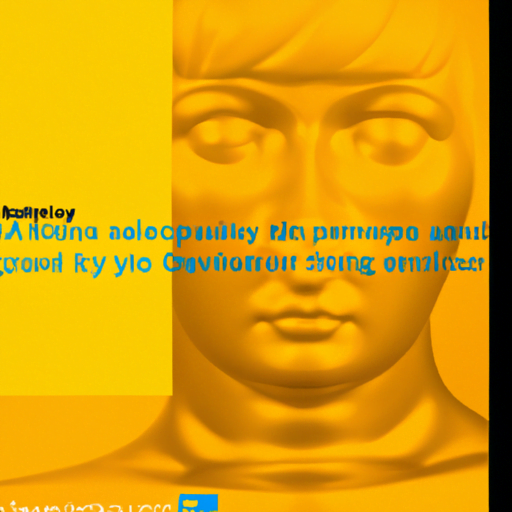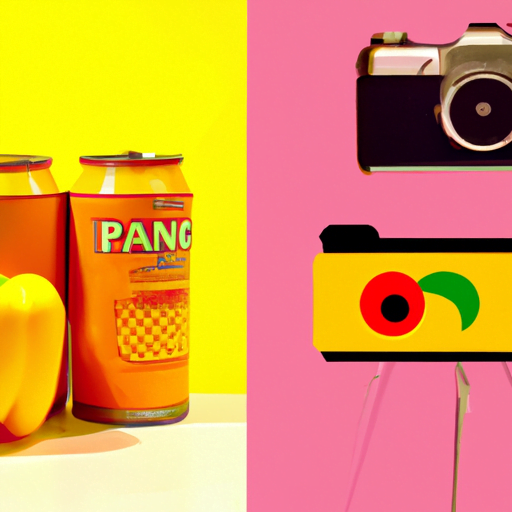
-
Table of Contents
- Beyond Two Dimensions: Pushing the Boundaries of Graphic Design
- The Rise of Multidimensional Design
- Examples of Multidimensional Design
- 1. Augmented Reality (AR)
- 2. Virtual Reality (VR)
- 3. Motion Graphics
- The Impact of Multidimensional Design
- 1. Advertising and Marketing
- 2. User Interface and User Experience Design
- 3. Education and Training
- The Future of Multidimensional Design
- 1. Mixed Reality (MR)
- 2. Holographic Design
- 3. Artificial Intelligence (AI) in Design
- Conclusion
Beyond Two Dimensions: Pushing the Boundaries of Graphic Design

Graphic design has come a long way since its inception, evolving from simple two-dimensional designs to complex and immersive experiences. With advancements in technology and a growing demand for innovative and engaging visuals, designers are pushing the boundaries of traditional graphic design. In this article, we will explore the exciting world of multidimensional graphic design and how it is revolutionizing the industry.
The Rise of Multidimensional Design
In the past, graphic design was primarily focused on creating static visuals for print media. However, with the advent of digital platforms and interactive technologies, designers now have the opportunity to create multidimensional experiences that go beyond the limitations of traditional design.
One of the key drivers behind the rise of multidimensional design is the increasing demand for immersive and interactive content. As consumers become more tech-savvy and expect more engaging experiences, designers are challenged to think beyond two dimensions and create designs that captivate and hold the viewer’s attention.
Examples of Multidimensional Design
There are numerous examples of multidimensional design that showcase the potential of pushing the boundaries of graphic design. Let’s explore a few notable examples:
1. Augmented Reality (AR)
Augmented reality is a technology that overlays digital content onto the real world, creating a multidimensional experience for users. Graphic designers can leverage AR to create interactive and immersive designs that blend the physical and digital worlds.
For example, IKEA’s AR app allows users to visualize furniture in their own space before making a purchase. By simply pointing their smartphone camera at a room, users can see how different pieces of furniture would look and fit in their home. This not only enhances the shopping experience but also helps users make more informed decisions.
2. Virtual Reality (VR)
Virtual reality takes multidimensional design to a whole new level by creating entirely virtual worlds that users can explore and interact with. Graphic designers play a crucial role in designing the visual elements of these virtual environments, from landscapes to characters and objects.
An excellent example of VR graphic design is the game “Beat Saber.” In this rhythm-based game, players use virtual lightsabers to slash through blocks in time with the music. The game’s visually stunning and immersive environment, combined with its addictive gameplay, has made it a hit among gamers worldwide.
3. Motion Graphics
Motion graphics combine graphic design with animation to create visually compelling and dynamic content. By adding movement to static designs, designers can convey information in a more engaging and memorable way.
A famous example of motion graphics is the opening sequence of the movie “Catch Me If You Can.” The sequence, designed by Olivier Kuntzel and Florence Deygas, uses a combination of typography, illustrations, and animations to tell the story of the film’s protagonist, Frank Abagnale Jr. The sequence not only sets the tone for the movie but also showcases the power of motion graphics in storytelling.
The Impact of Multidimensional Design
The rise of multidimensional design has had a significant impact on various industries and sectors. Let’s explore some of the key areas where multidimensional design is making a difference:
1. Advertising and Marketing
In the world of advertising and marketing, multidimensional design has become a powerful tool for capturing and retaining audience attention. Brands are leveraging technologies like AR and VR to create interactive and memorable experiences that leave a lasting impression on consumers.
For example, Coca-Cola’s “Happiness Machine” campaign used AR to bring a vending machine to life. When users interacted with the machine, it responded with unexpected surprises, creating a sense of joy and delight. The campaign not only generated buzz but also increased brand awareness and engagement.
2. User Interface and User Experience Design
Multidimensional design has also revolutionized the field of user interface (UI) and user experience (UX) design. With the increasing complexity of digital interfaces, designers are using multidimensional elements to enhance usability and create more intuitive experiences.
Take the example of Apple’s iOS operating system. The introduction of 3D Touch technology allowed users to interact with their devices in a more tactile and multidimensional way. By varying the pressure applied to the screen, users could access additional features and shortcuts, making the overall user experience more efficient and enjoyable.
3. Education and Training
Multidimensional design has also found its way into the field of education and training, transforming the way we learn and acquire new skills. By creating immersive and interactive learning experiences, designers are making education more engaging and effective.
For instance, medical students can now use VR simulations to practice complex surgical procedures in a safe and controlled environment. These simulations allow students to gain hands-on experience and develop their skills before operating on real patients, reducing the risk and improving patient outcomes.
The Future of Multidimensional Design
As technology continues to advance, the possibilities for multidimensional design are only going to expand. Here are some trends and developments that we can expect to see in the future:
1. Mixed Reality (MR)
Mixed reality combines elements of both AR and VR, allowing users to interact with both the real and virtual worlds simultaneously. This technology has the potential to revolutionize various industries, from gaming and entertainment to healthcare and architecture.
2. Holographic Design
Holographic design is another exciting area that holds immense potential. With advancements in holographic technology, designers will be able to create three-dimensional holograms that can be viewed from different angles, providing a truly immersive and realistic experience.
3. Artificial Intelligence (AI) in Design
Artificial intelligence is already making its mark in the field of graphic design, with AI-powered tools assisting designers in creating complex and personalized designs. In the future, we can expect AI to play an even more significant role in multidimensional design, helping designers automate repetitive tasks and generate innovative ideas.
Conclusion
Multidimensional design is pushing the boundaries of graphic design, opening up new possibilities and opportunities for designers. From augmented and virtual reality to motion graphics, multidimensional design is transforming various industries and sectors, enhancing user experiences and creating memorable interactions. As technology continues to evolve, we can expect multidimensional design to become even more immersive and integrated into our daily lives. The future of graphic design is multidimensional, and designers who embrace this shift will be at the forefront of innovation and creativity.
